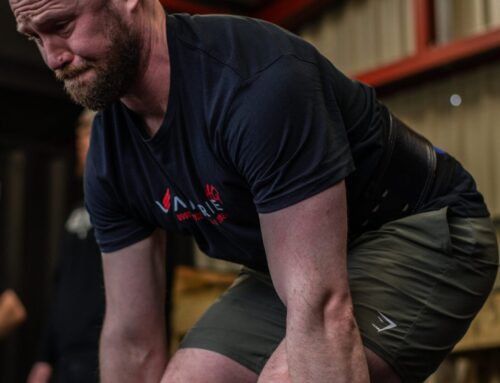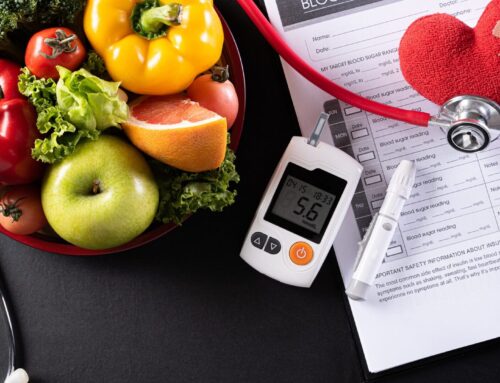How to Track Calories for Fat Loss, Muscle or Performance
Perhaps you’ve tried calorie counting but gave up. There are plenty of ways to track calories and this article will help you figure out what works for you.
If you still look like you did 6 months ago, and you haven’t gotten stronger or faster then your diet could be to blame.
Nutrition advice is confusing though.
There’s so many ‘diets’ out there it’s hard to know where to start.
Whatever you try it’s hard to lose weight, build muscle, or improve performance.
You feel lost.
Maybe the problem isn’t you.
What if you had a better way to track calories.
Even without tracking them.
Something you can use in any situation.
Perhaps you tried counting calories but ran out of enthusiasm.
Should you even track calories at all?
Whether you want to get stronger, leaner, improve your athletic performance or just be healthier the foods you eat matter.
This article will help you understand the best ways to track calories for your goal even without counting them.
Benefits of Tracking Calories for Fat Loss
If you’ve read my article on losing weight sustainably, you’ll know that calories determine fat loss.
Controlling portions automatically controls calories which is why you don’t have to track them.
But calories always count!
Weight loss takes time so figuring out your best way to track calories is essential.
That’s why this article gives you 9 ways to track calories even without tracking them.
Benefits of Tracking Calories for Muscle and Performance
Building muscle or unlocking your potential on the sports field means eating enough.
Both need you to train hard.
You can grow muscle whilst undereating, but your training will suck.
You’ll be leaving gains in the tank too.
Being in a slight calorie surplus gives the best results.
Likewise, to run further and faster it always helps to have more fuel available.
Put another way, if you drove around everywhere with your foot flat to the floor, you’d expect to buy more petrol.
Athletic performance is no different, you need enough fuel to keep going at full capacity.
9 Ways to Track Calories Whatever your Goal
If you’re reading this article, you probably think your nutrition could be improved.
Whether you’re eating for fat loss or performance, what gets measured gets managed.
If you aren’t seeing progress, it’s time dial in the detail.
Here are 9 ways to track your calories for fat loss, muscle gain, health, or performance:

As you’ll see each option comes with trade-offs.
Lower effort reduces accuracy which could limit progress.
But just because something is more accurate it doesn’t make it right for you.
Improving your nutrition takes time and patience so pick the easiest approach that gives the result you want.
Then stick to it until you stop getting results.
If results slow or stop, check how closely you followed your method last month:
- If you were on point it might be time to move to a more accurate method
- If you weren’t on point, understand why first
Improving your diet needs you to:
- Understand what you eat now
- Have a strategy of how to optimise that
Let’s get started with the simplest way to track calories (without tracking them)…
Ways to Track Calories: #1 Eat Slowly!
This tip is the simplest way to ‘track’ calories.
So simple, you don’t have to track anything at all.
Just slow down and be present at your next meal.
That’s it!
It takes 20 minutes to feel full so inhaling your lunch in 5 minutes whilst replying to emails leaves you hungry later.
Not to mention what it does to your digestion…
If you’re always hungry, try one of these at your next meal:
- Turn off the TV
- Close the Laptop
- Put away your phone
- Chew each mouthful 20 times
- Put cutlery down between bites
- Have a conversation
Pros:
- Tuning into your huger helps you eat less
- You can use it in any situation
Cons:
- Works better with less refined, whole foods than things like pizza
- Won’t help you eat more to fuel muscle gain or performance
Ways to Track Calories: #2 Food Choices Only
The next way to track calories without tracking them is to focus on food choices.
You might know this strategy as ‘clean eating’.
To avoid doubt, nobody is suggesting you stick your evening meal in the dishwasher.
Put simply, it’s prioritising minimally processed foods (fruit, veg, potatoes, unprocessed meat & fish, beans, pulses etc.) over more processed options (like cake, pizza, croissants, crisps etc.)
Food quality is not black and white though.
There are no ‘good’ or ‘bad foods’ but some are more nutrient dense than others.
Precision Nutrition do a great job of explaining that in the image below[1]:
You can follow this method of focusing on food choices meal to meal, day to day or on a weekly basis.
It will help to use a meal planner (like this).
Pros:
- Good for beginners
- You’ll feel fuller which makes weight loss easier
- Being well nourished improves your energy, vitality, and recovery
Cons:
- You can still overeat foods like avocado and peanut butter which are high calorie
- Chocolate, booze, or pizza is harder to include but you can use ‘the 80:20 rule’ (see below)
- Minimally processed foods are filling so you might undereat for muscle gain or performance
The 80:20 Rule
You only need to be ‘on point’ with your diet 80% of the time. [2][3]
It’s more sustainable if you can eat a muffin at the coffee shop, or a takeaway now and then.
Just not all the time!
80% of your diet should always be minimally processed whole foods (regardless of the way you track calories).
If you limit muffins, takeaways, and other more processed foods to 20% of your diet you’ll still reach your goal and enjoy the process more.
Make sure you track that 20% though!
Remember I said what gets measured gets managed?
The simplest possible way to monitor any habit is to pin a calendar to your fridge.
On the days you ate whole, minimally processed foods, put a red circle. On the days you didn’t, put a black cross:
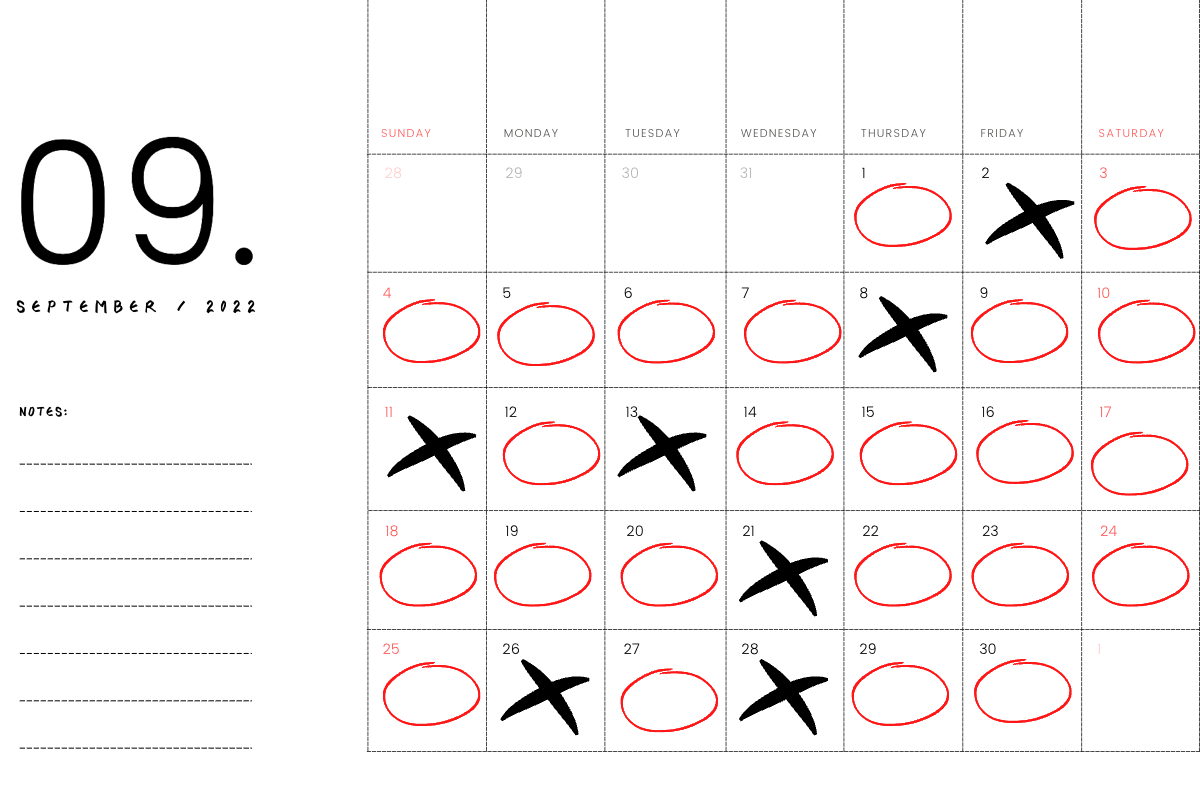
At the end of the month, if you have 22-24 red circles, 80% of your diet has been on point which is good enough.
Not sure how to build a healthy, balanced meal?
Join my free 4-week email course HERE.
Ways to Track Calories: #3 Food Choices & Portion Sizes
Follow method 1 but you introduce more accuracy by monitoring portion sizes too.
For fat loss, this can be as simple as using your hand or your plate:
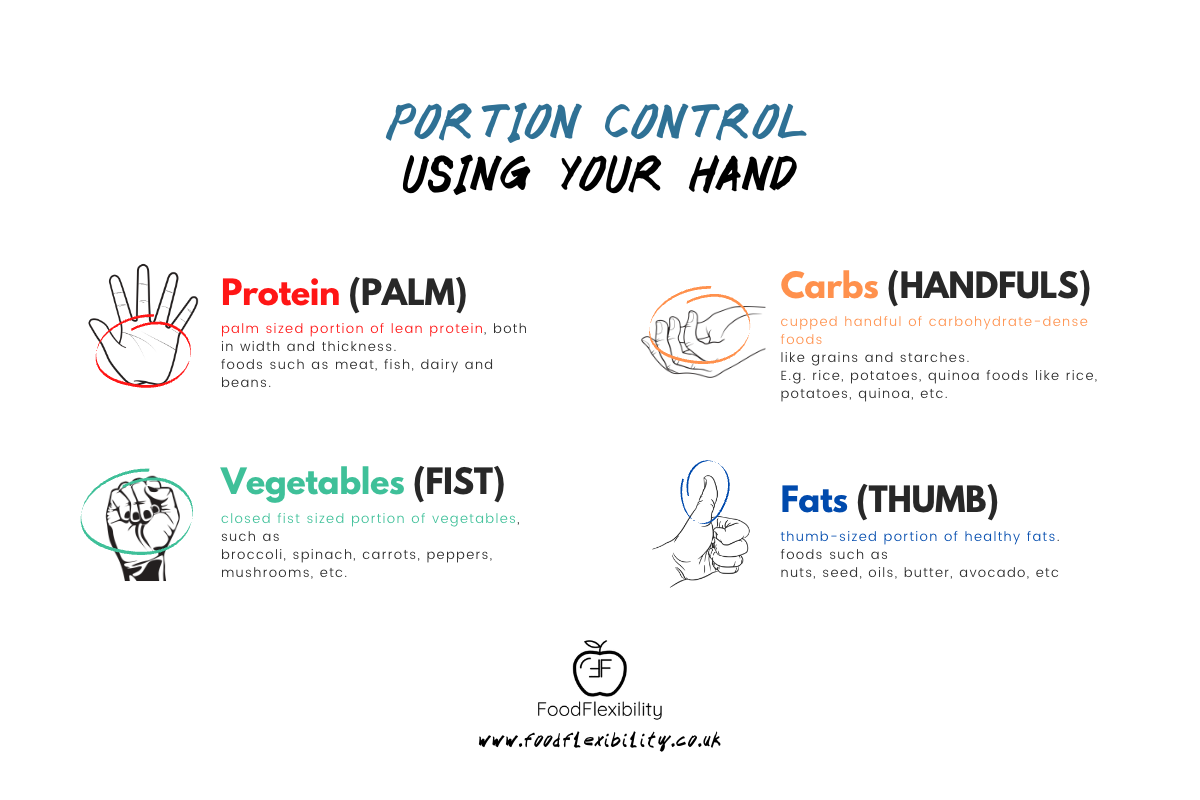
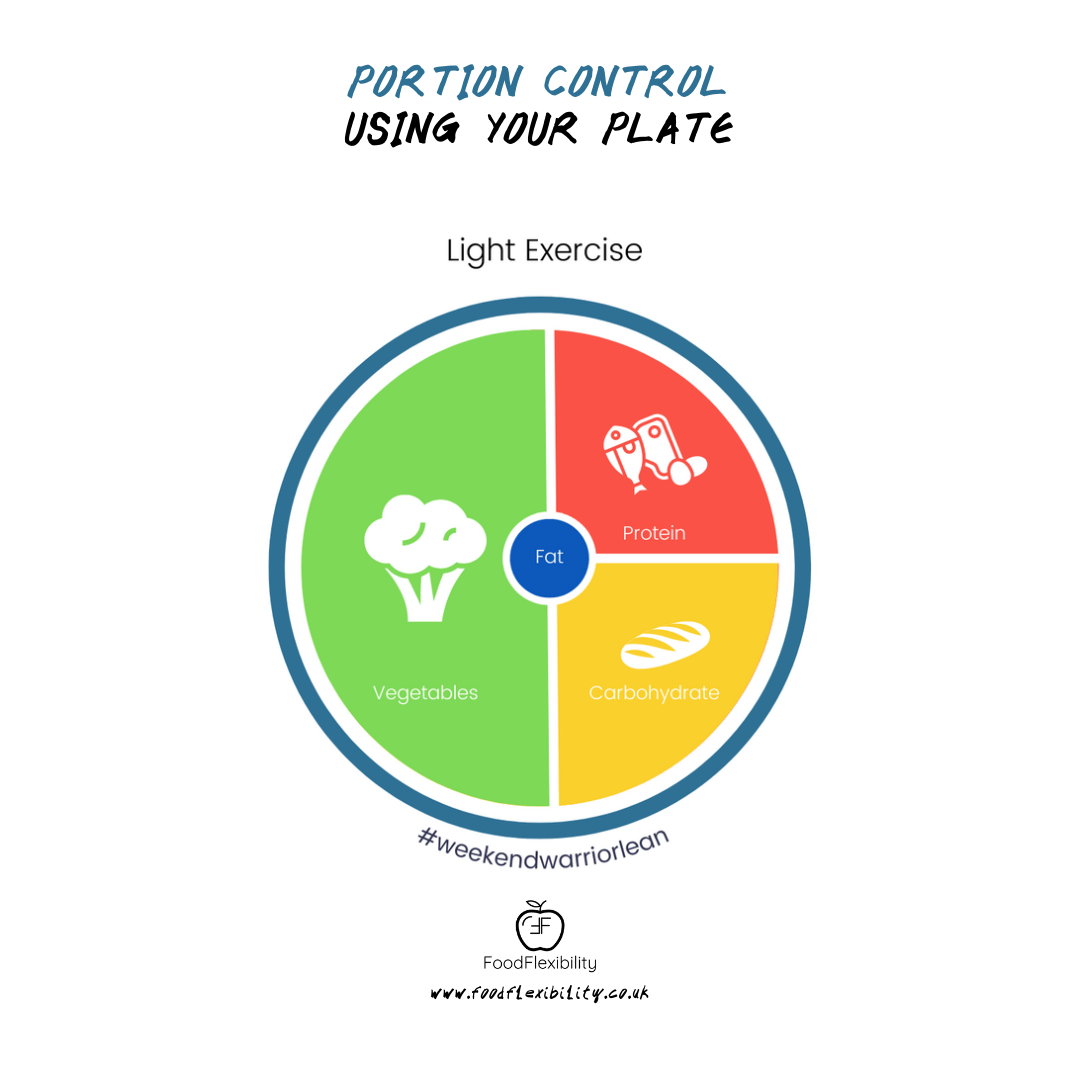
Weighing or using measuring cups is more accurate but your hand is more convenient.
For muscle gain, your plate looks more like this:
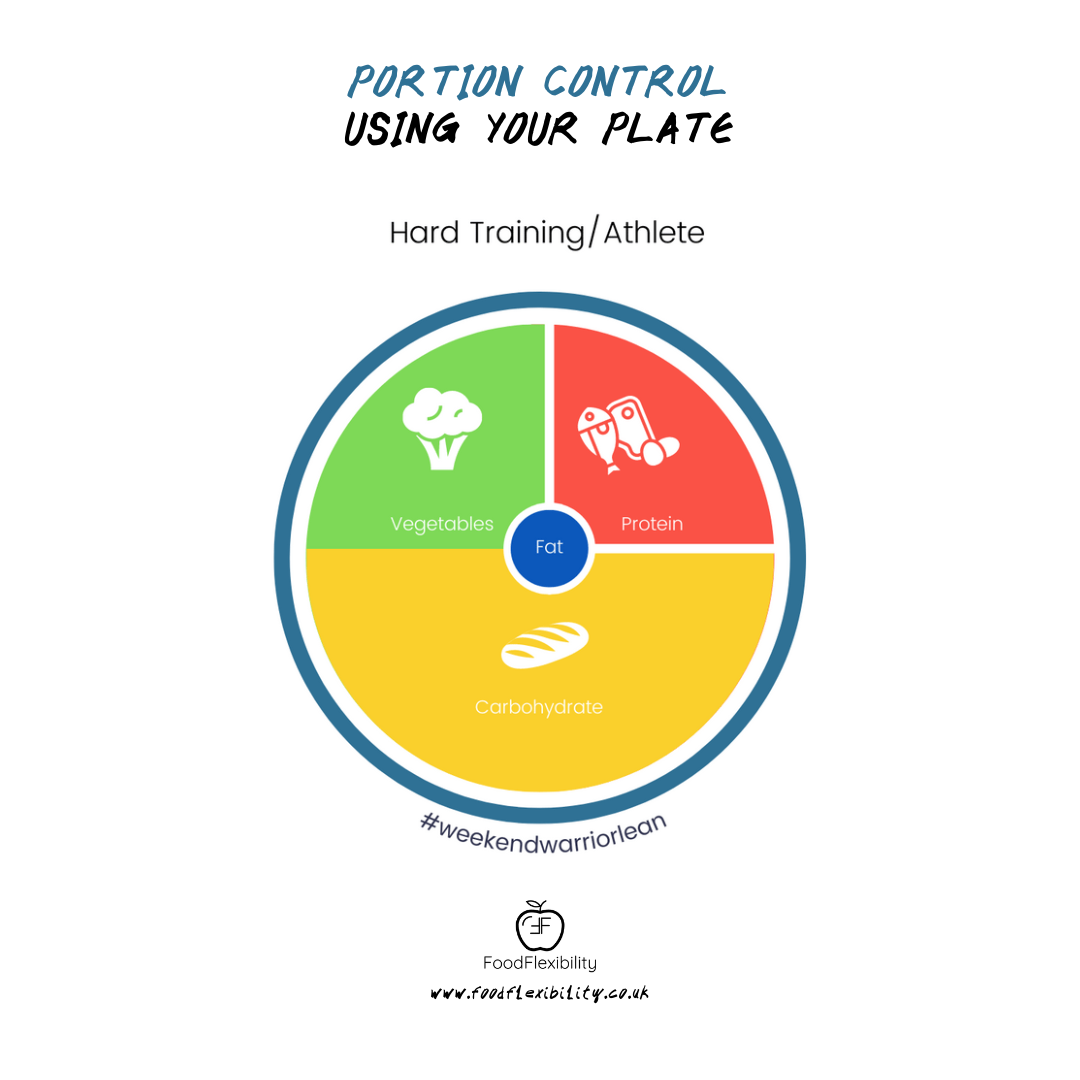
Dietary control is nothing if you don’t stick to it for long enough, so monitor using the same calendar method as option #1.
Pros:
- More accuracy helps if weight loss has stalled, or you need to eat more
Cons:
- Including things like booze, or ice cream still needs the 80:20 rule (see option #2)
- Hard to account for high activity (cycling, long distance running, team sports etc.)
Ways to Track Calories: #4 Tracking Protein
As ways to track calories go this one is hugely underrated.
You follow option 2 or 3 but set a protein goal that you hit by using food labels, or a calorie tracking app.
I recommend MyNetDiary to pick foods which meet your goal.
How much protein should you eat?

Pros:
- Increasing your protein intake usually reduces portion sizes and snacking – fantastic for fat loss
- Getting enough protein means you’ll grow and repair muscle, improving sports performance (and your ‘Gainz’)
- Simple introduction to more advanced methods
- You begin to learn about food which gives you FoodFlexibility!
Cons:
- More complicated but product labels and apps can help
Ways to Track Calories: #5 Unusual Day Calorie Tracking
Use this method if you’re following any of the first three steps but fancy a break for the day.
Simply track the calories in your food and drink using an app like MyNetDiary.
A daily calorie total gives you an idea of when to stop eating, or eat more, depending on your goal.
Hopefully it goes without saying but if your day off is a special occasion (your wedding day, a religious festival, etc.) then take the day off and enjoy it without tracking anything!
Pros:
- Stops you going completely ‘off the waggon’ on your ‘cheat days*’
- Keeps you on track where you can’t (or don’t want to) eat minimally processed whole foods
- You realise ice-cream, cookies, chocolate, and crisps won’t instantly make you fat, waste your muscle or kill your sports performance (but they do have less vitamins than broccoli 😉)
Cons:
- You’ll need to use a calorie tracking app or read some labels
*BTW, I hate the term ‘cheat day’. Who are you cheating on… Food is food, some is more nutritious, but you won’t get arrested by the food police for eating a Krispy Kreme on a diet!
Ways to Track Calories: #6 Calorie Tracking
Quite simple.
Download the MyNetDiary app and follow the instructions to set a calorie target.
Being within 100 calories of that target each day is fine.
Track everything you eat and drink to begin with but make your life simpler by not tracking veg unless it’s a potato.
True story…
A personal trainer once told my wife that if she didn’t track veg in her calorie app, she’d end up overeating:
- 100g of broccoli is 34 calories
- 100g of ice cream is 207 calories
Please don’t waste your energy tracking broccoli 😇
Non-starchy vegetables are nutritious and low calorie so eat as many as you like!
Here’s my online weight loss client Clair:
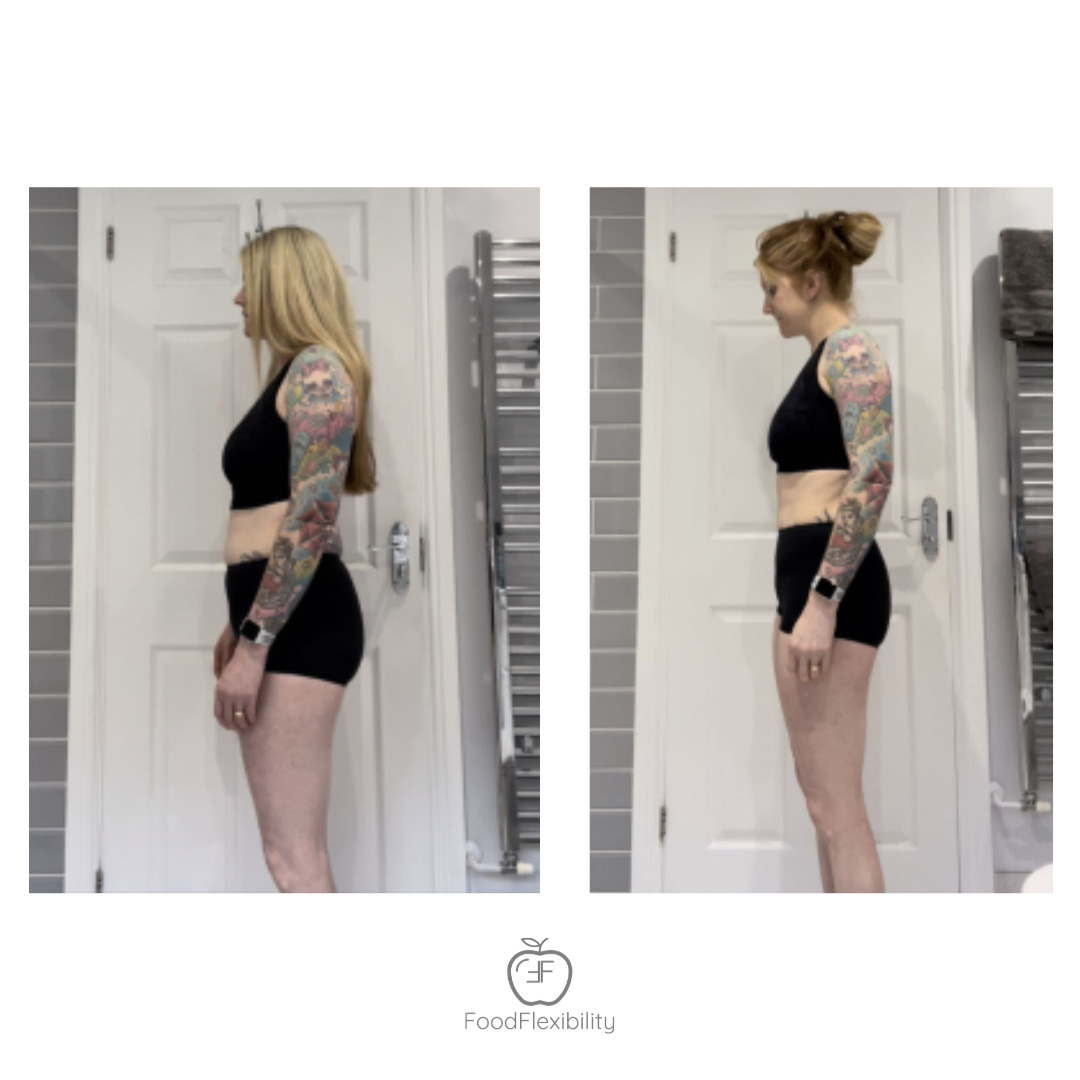
As a busy, self-employed mum Clair doesn’t waste time tracking peas.
Be like Clair!
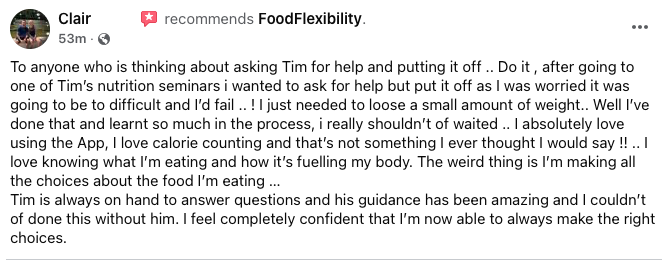
Pros:
- More accurate
- Easier to incorporate a wider variety of food
- Tracking calories before meals helps you decide if you can eat more or need to scale back portions to stay on track
- Best way to ensure you’re eating enough for muscle gain or performance
- Helps endurance athletes to eat back the significant calories burnt on long events so they fully recover
Cons:
- Some will use as an excuse to eat like a 6-year-old. Get your fruit and veg in please 😉
- If you just scan barcodes, you miss out on learning about foods
- Not good if you dislike numbers or tech
- Not suitable if you have an eating disorder but unlikely to give you one if you don’t (provided you don’t take the detail too far)
If you’re experienced in tracking calories (30 days or more)
You don’t need an app anymore!
- Take your calorie target and enter it in your smartphone calculator
- Deduct the number you eat at each meal until you reach zero
Trust me, you know the calories in your regular meals better than you think. You can always double check on the packet or in MyNetDiary.
Ways to Track Calories: #7 Calorie & Protein Tracking
This is the method I recommend to 99% of my online nutrition clients.
If methods 1-6 have stopped working, you want to optimise results in the gym or on the sports field this is the method for you.
Track your calories in MyNetDiary but add a protein target.

Accuracy:
- Calories to the nearest 100
- Protein to the nearest 10g
A word on ‘macros’
Provided you’re not eating sticks of butter if you hit your calorie and protein target, in that order of preference, the carbohydrate and fat totals usually sort themselves out.
Just remember, the more athletic ambition you have, the ‘carbier’ your diet should be.
Pros:
- Hitting your protein goal helps hunger and performance
- Optimal for muscle growth, gym training, sports, and endurance
Cons:
- Tracking doesn’t suit everyone
- Food quality matters. Apply the principles of options 1-3 (eating like a grown up) first
Ways to Track Calories: #8 Macronutrient ranges
If you’re focused on performance it can help to temporarily track all macronutrients (protein, carbohydrate, and fat) whilst you learn how best to fuel yourself.
But!
The exact numbers rarely matter.
Rather than treat MyNetDiary as a game to ‘complete’ by aligning all your macros exactly (who has time for that), just aim for a range:
- Calories: +/- 100
- Protein +/- 10g
- Carbs +/-10g
- Fats +/-5g
If your eyes have already glazed over, head back to option 7!
Pros:
- May help specific goals
- Good tool for learning about your diet
Cons:
- Extra detail might limit food choices and flexibility
- Can lead to overthinking, or trigger unhealthy relationships with food
Ways to Track Calories: #9 Exact Macronutrients
‘Exact’ usually means +/-5g for each macronutrient.
But!
This level of detail is only necessary for those preparing for a bodybuilding show.
If you’re a bodybuilder I doubt you’re still reading this article…
You’ll probably never need this level of detail.
If you’ve got to option 7 and things aren’t working, send me an email and I’ll help you figure out why.
Pros:
- You love detail
- I literally can’t think of any others
Cons:
- Honestly, it’ll be a pain in the ass!
The Best Method of Calorie Tracking is the one that Works for You!
This article has given you 9 ways to track calories. Some of them don’t even require tracking.
Remember you don’t have to stick to one method though.
Use the one you find easiest and most effective.
If you’re losing weight sustainably by making great food choices and monitoring portions whilst still eating the foods you enjoy, keep going!
Perhaps you’re on holiday and it makes sense to move from calorie tracking to making good food choices at one or two meals each day to save you from going completely off the rails.
Maybe you’re heading out for a big meal at the weekend, so you dial in the detail with calorie and macro tracking for the rest of the week to balance things out.
What I’m saying is you can and should switch between methods of tracking calories now and then.
Food Labels and Tracking Calories
Food labels are not 100% accurate but they are accurate enough.
Values are based on reference ingredients so more ingredients reduce accuracy.
Less processed foods have more accurate calorie information due to fewer ingredients so if most of your diet is made up of things like fruit, lean meats, vegetables, rice etc. (as it should be) you don’t need to worry about inaccurate labels.
Remember whatever the method of calorie control, you don’t need to be desperately accurate.
If you’re consistent with your tracking methods, the errors balance out over time.
Nobody got fat, lost muscle, or ruined their sporting performance because they weren’t sure if their cheeseburger and chips was 847 calories or 923!
Which Method of Tracking Calories is For You?
Now you should be able to pick the best method (ideally methods) of tracking calories for your goal.
Keep an eye on your adherence over time and remember you’re only letting yourself down if you don’t track because you slipped up!
After all, the best thing to do when you slip up is get back to eating well as soon as possible.
Once you’ve had a chance to digest this article (pun intended) let me know if you have any questions in the comments.
I’d love to help!
References:
[2] BTN Academy – The Art of Nutrition Coaching – Bainbridge. Coomber, Hawkins, Herbert 2018



